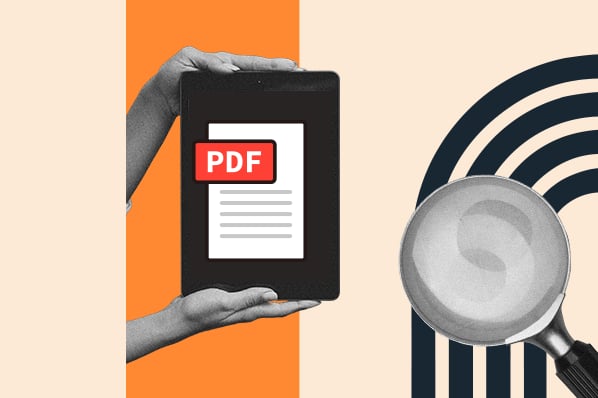
The end of the first quarter of 2013 is upon us, and if you’re looking to grow your business this year (and who isn’t!?), public relations can be a critical ingredient in your marketing mix. PR can drive brand awareness, introduce you to new prospects and customers, and amplify your core brand messages.

The good news is that the amount of time people spend interacting with media is only growing; the bad news is that traditional PR is rooted in tactics that were only relevant twenty years ago. Hmm. What to do to compensate for that disparity?
Below, we’ve outlined seven tactics to help you modernize your PR approach and bring it into 2013, along with some examples of great companies who have blogged, pitched, and publicized their way to great PR success in the 21st century.
1) Just Because It’s Free, Doesn’t Mean It’s a Free for All
If you’re not using HARO (Help A Reporter Out), you could be missing out on dozens of relevant article opportunities every year to pitch your business. However, just because HARO and other similar tools are free doesn’t mean you ignore the rules of the road. In fact, because of the massive volume of responses most HARO requests deliver, it’s even more imperative that you are considerate of reporters and craft your responses in line with the parameters outlined by both HARO and the journalist participating in the request. If you’re not sure, here are some general rules of the road to follow, regardless of whether you’re using a service that’s free or paid:
Respond to the Request at Hand: If you notice a reporter you’ve been hoping to work with for a while posted to HARO but the story he or she is filing is unrelated to your business, do not respond to their inquiry. HARO delivers value to reporters by delivering quality responses based on their specific requests, so don’t abuse it -- respond only to inquiries where your company can contribute genuine value, and play by their rules. Following the protocol helps the reporter stay organized, positions you as a business that's easy to work with, and enables services like HARO to continue growing their business.
Respect the Deadline: If a posted request (on social media, HARO, or otherwise) says the reporter is filing that evening, only respond if you can truly deliver what they are requesting in the designated timeline. If you can’t, you’re just wasting your time and the reporter’s time, as well.
Keep It Short, Sweet, and to the Point: One of the benefits of HARO requests is that they are typically pretty straightforward in terms of what the reporter is seeking. To that end, make sure that your response email is succinct, clear, and specific in terms of what you can deliver and by what timing. For ease of use, also include your website, phone number, and full contact information to make it as easy as possible for the reporter to contact you to learn more or follow up as needed.
2) Don’t Wait for the Media to Tell a Compelling Story
It used to be that if you wanted to get a compelling story out about your company, you had two options: wait for a journalist to tell it, or buy ads to promote the story. With the massive proliferation of social media and blogging, you now have more options than ever to share impactful company stories with the world and to show media outlets that people care about what you have to say. By way of example, you can read HubSpot co-founder Dharmesh Shah’s latest thoughts on business and technology by visiting onstartups.com or read our CMO Mike Volpe’s thoughts on sales and marketing alignment via a guest blog with Salesforce.com. Both of those opportunities were secured because of an investment in creating content, and establishing solid relationships with others within our industry -- not as a result of traditional media relations.
Regardless of whether you post on your company blog or a guest blog (and how big or small those outlets are), leverage your company’s inbound marketing assets to share the trends, observations, and ideas that are top of mind for your industry. In addition to showing reporters that people care about these issues, it also presents a clear picture of your viewpoints so reporters can easily approach you for more information or context.

A great example of telling your own story in a compelling manner comes from FotoBridge, a photo scanning company based in New Jersey. The co-owners of FotoBridge leveraged inbound marketing tactics to tell a compelling story about their brand, product, and customer success on both their website and social media channels. As a result, the company has now attracted more than 14,300 fans on Facebook and did such a great job with inbound marketing that they were profiled on the New York Times website to talk about how successful they were in growing their business. Attracting new customers can be a real challenge, so don’t wait for people to come to you -- build interest by sharing a compelling narrative on your own blog and social channels so it’s easier for reporters and customers alike to find you.
3) Don’t Just Tell, Show
It used to be that public relations was heavily dependent on the wording of your press releases or emails because you were limited to text to tell your story, but that’s no longer the case. Leverage infographics, videos, photos, and customer success stories to make your outreach stand out from the pack. As more and more news is consumed on blogs and social media, reporters -- like the rest of us -- are focusing more and more time and effort on making content more creative and highly shareable. To that end, arming reporters with compelling visuals to make your story stand out from the pack can increase the success of your media relations.
Take, for example, last week’s Pi Day, otherwise known as March 14th. MIT has proactively and consistently newsjacked Pi Day by notifying prospective students of their acceptance or admissions on that afternoon. But this year Shutterstock, an online photo imagery service, got in on the action too, releasing an infographic with a photo representation of the most common pies.

The more you can insert your brand into fun, relevant conversations with highly visual content, the better. Reporters will thank you for making their jobs easier, and potential customers will welcome your highly shareable and engaging content by promoting it on their social networks, as well.
4) Deliver Assets Up Front
Think about what your inbox looks like on a daily basis. Now imagine being a reporter for a national news outlet or a prominent industry blog, and consider how many emails you're getting pitching stories, products, executives, and trends. Weeding through that clutter would be virtually impossible. As a result, going the extra mile to assemble the assets a reporter would need to file the story goes a long way to improving your pitch. Options include:
- If you’re referencing supporting video or photos, include them in a Dropbox link in the email so that they can look at them or reference them down the line if needed.
- If you have third party references to support the story or trend you're pitching, including their names, titles, and links to their biographies in the email so the reporter has context for the value they can deliver as part of the overall pitch.
- For product launches, include screenshots and descriptions of the product so they can take a look at the visuals on their own time and use a relevant one in their story, if helpful.
5) Personalize Your Outreach
Nobody likes receiving mass marketing messages that start with "Dear Sir" or have no greeting or personalization whatsoever, and reporters are no exception. Regardless of medium, journalists are storytellers by trade, so understanding their perspective is critical to the success of your PR efforts. Below we’ve outlined a checklist of what you should know prior to hitting "send" on your reporter emails:
- What he or she has written on the subject you’re pitching them on, in the last week or so
- What he or she has posted related to the subject on social media outlets
- Past feedback he or she has provided on pitches you’ve provided (Note: if he or she didn’t respond, don’t use the exact same tactic again; mix up your approach)
- Any updated editorial guidelines for his or her publication that have been published or noted (e.g. if he or she just changed beats and has a different focus or if their editor just declared a singular focus on one portion of your industry, make sure you’re aware and focus your pitch accordingly)
6) Make It Easy for Journalists to Find Your Experts
You optimize your site to help consumers find you, but have you optimized your digital assets to make it easy for journalists to contact your internal experts? Typically when a reporter needs a source for a story, he or she has less than a day to find, contact, interview, and quote those experts, so making it as easy and painless as possible to contact your team is critical.
So ask yourself: If news broke about a key thought leadership issue in your field and you were looking through search engines to find an industry expert in your space, would one of your executives come up? If so, is there an easy mechanism to contact the executive or to contact you to set up time with that individual? If not, here are some potential fixes to consider that will make "getting found" as simple as possible for your internal experts:
- Include each expert’s title, headshot, and key areas of expertise on a page on your site.
- Ensure that each of your internal experts has blogged about their areas of desired thought leadership and that you optimize those blog entries for key industry buzzwords.
- Confirm that your media pages have a strong call-to-action to reach you and learn more, and that it goes to an inbox that is checked and responded to regularly.
- Make sure your company page and social channels track and promote thought leadership pieces created by those executives, such as guest blogs, executive profiles, and internal whitepapers on related topics.
7) Beware the Boring Press Release
If you’re bored writing a press release, imagine a reporter who knows very little about your business reading it. Snooze. Can he or she easily extract the information they need from it? Have you sent four similar releases to the same group of reporters in the last two weeks? If so, consider the following options as alternatives:
A New Format: HubSpot’s acquisition of company oneforty was announced with a press release comprised entirely of tweets, which resulted in pick-up in MediaBistro and the Wall Street Journal, among other outlets. If you’re not getting the traction you’d hoped for with traditionally formatted releases, consider mixing it up -- add more visual content, make the format more social media-friendly, or release it on YouTube instead. Fundamentally, you want to make the newsworthy information easy to find, read, and write about, so anything you can do to make it more likely reporters will read or consume it will improve your results.
Know Your Numbers: What makes your release newsworthy is likely its impact on a larger trend, so including great data a reporter can reference and leverage to share the story is critical to your success. When crafting your announcements, try to include as much relevant, unbiased data as possible. Doing so will prove to a reporter that what you’re doing is important to your industry, your city, your marketplace, your employees, and the world.
Consider Co-Marketing: Launching a new product or service line? Consider including your beta partners' opinions on the product in the release to drive coverage. Opening a new office? Talk to your local Chamber of Commerce or development authority about supplying a quote for your forthcoming release. Fundamentally, you want to show that your company’s news is important, and joining forces with other local businesses or industry partners can be an exceptional way of achieving this goal.
When it comes to growing your business, public relations can play an integral role in developing your executive team’s thought leadership and attracting new prospects and customers to your brand. But 21st century PR isn’t about pitching stories on a quarterly basis when you do a big product launch; it’s about building and maintaining mechanisms to share your company’s news on a daily basis, then making the absolute most of your direct outreach to reporters with releases and pitches that are efficient, effective, and informed.
By adopting a more comprehensive, inbound approach to public relations, you’re creating ownable assets that make it easier for reporters to find and speak to your team, outlining industry positions and insights that help set the tone for the story you want to share.
How modern are your PR techniques? What else can marketers do to bring their PR strategies and tactics into the 21st century?
Image credit: Erwss, peace&love
![How to Write a Press Release [Free Press Release Template + 2024 Examples]](https://www.hubspot.com/hubfs/press-release-template_9.webp)
![How to Write an Effective Communication Plan [+ Template]](https://www.hubspot.com/hubfs/communication%20plans.jpg)






![Should You Pay a PR Firm? [+PR Tactics You Can Manage In-House]](https://www.hubspot.com/hubfs/hire-pr-fi%20%281%29.jpg)
